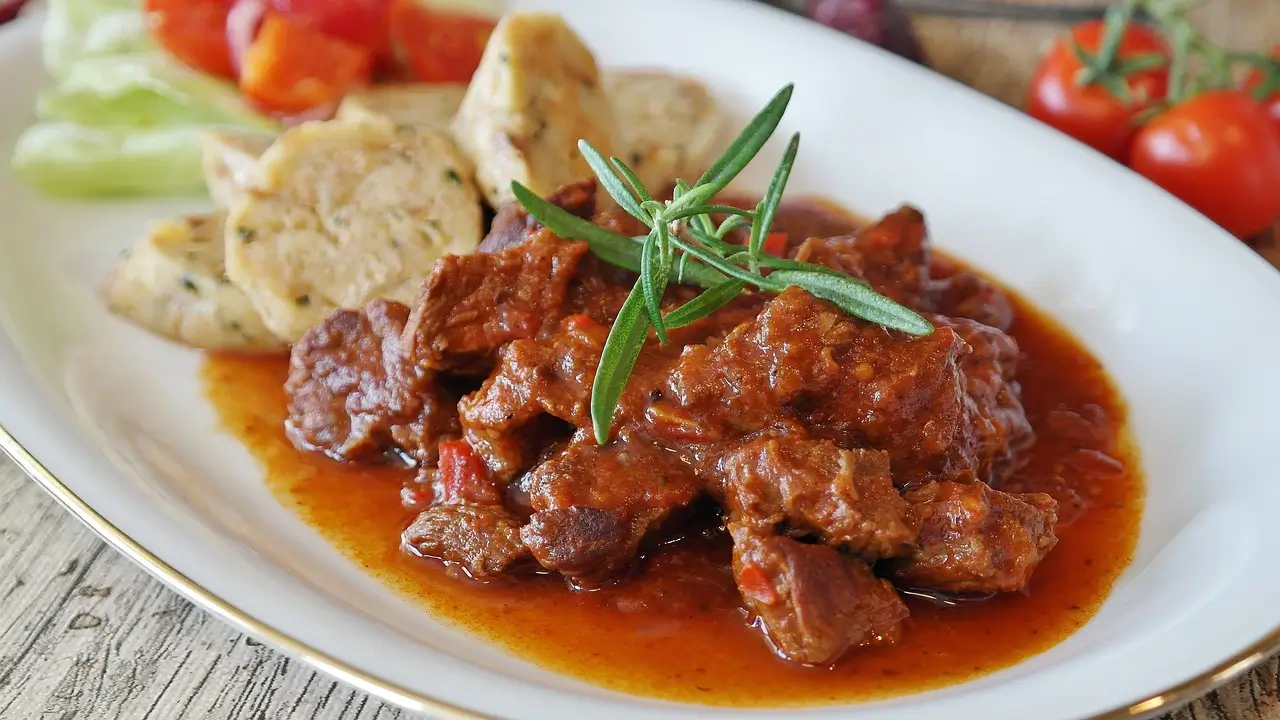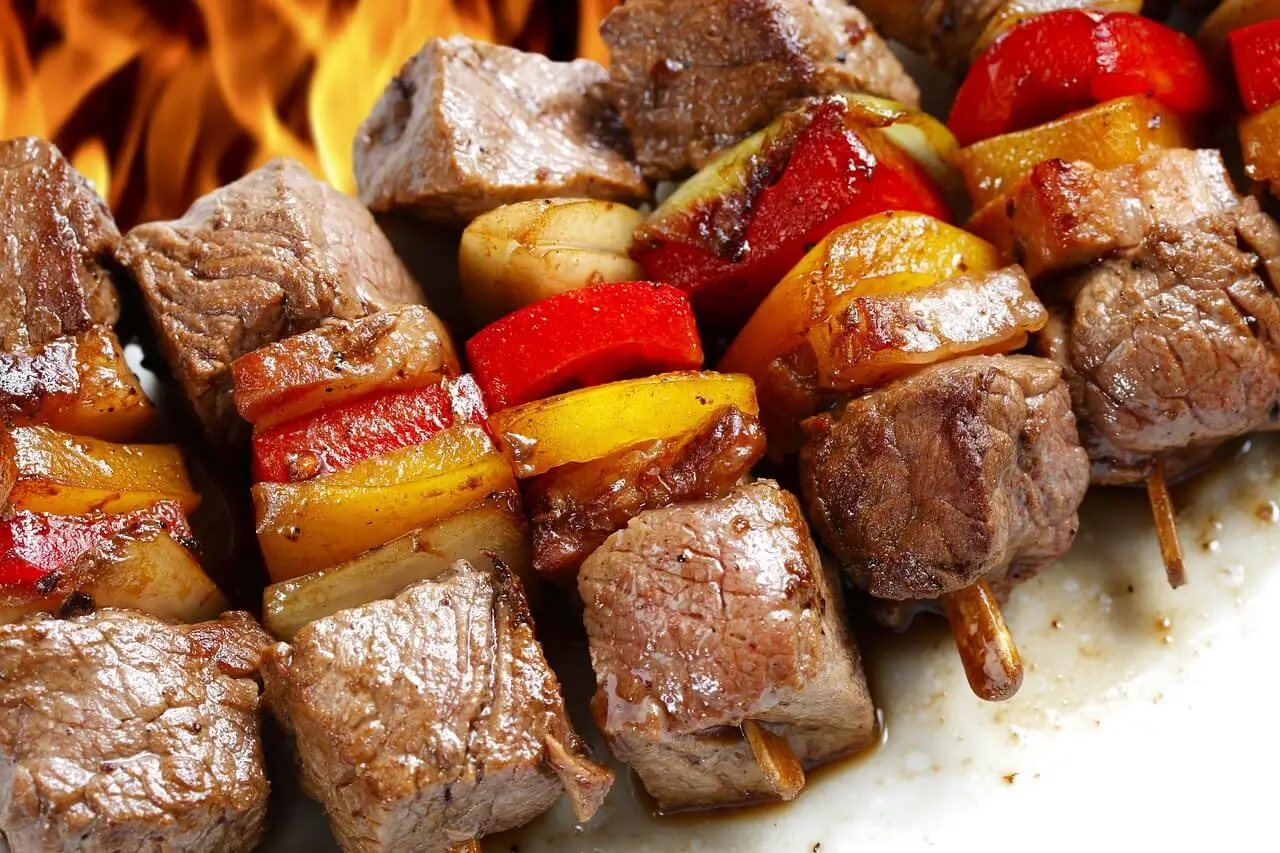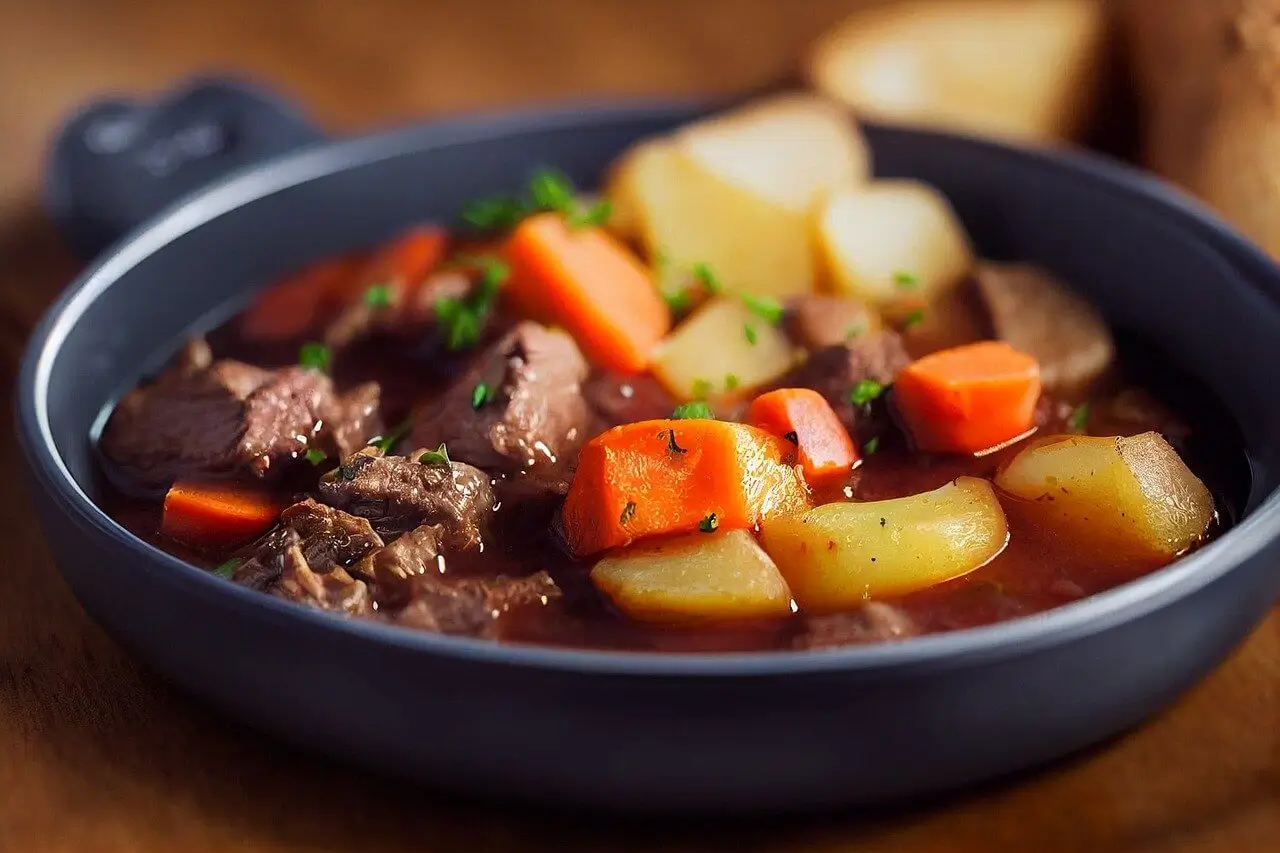Cooking beef heart recipe might seem scary, but it’s a fun journey for your kitchen skills. This meat is full of nutrients and has a deep flavor. It can make your cooking at home even better.
Trying beef opens up new cooking paths for brave home chefs. It’s a tasty and healthy choice instead of regular meat, easy on your wallet, and good for the planet.
Table of Contents
ToggleKey Takeaways
- Beef heart is a nutrient-dense protein source
- Cooking beef heart is easier than most people imagine
- Organ meats offer unique flavors and health benefits
- Simple techniques can transform beef heart into a delicious meal
- Beef heart is an affordable and sustainable protein option
Understanding Beef Heart: A Nutrient-Rich Organ Meat
Beef heart is a nutritional powerhouse that many overlook. It’s packed with nutrients that boost health and wellness. Exploring beef heart nutrition reveals a food that’s more than just muscle meat.
Beef hearts are rich in vitamins and minerals that support key body functions. Unlike regular beef, it offers concentrated nutrition. Beef heart can help improve your diet.
Essential Nutrients in Beef Heart
- High-quality protein with all essential amino acids
- Rich source of vitamin B12 for energy metabolism
- Abundant iron content supporting oxygen transportation
- Zinc for immune system support
- Selenium for antioxidant protection
Health Benefits of Consuming Organ Meats
Beef heart offers more than just essential nutrition. Its nutrient profile supports heart health, muscle growth, and metabolism. Athletes and health enthusiasts often choose beef hearts for their nutritional value.
Comparing Beef Heart to Traditional Cuts
| Nutrient | Beef Heart | Sirloin Steak |
| Protein (per 100g) | 26g | 22g |
| Iron (per 100g) | 6.5mg | 2.7mg |
| Vitamin B12 | High | Moderate |
Exploring beef heart nutrition shows a remarkable food that challenges old dietary views. Understanding its unique benefits can enhance your physical performance and overall health.
Benefits of Cooking with Grass-Fed Beef Heart
Grass-fed beef heart is a nutritional powerhouse with a unique flavor. It’s a premium choice that offers great taste and health benefits.
Compared to grain-fed beef, grass-fed beef heart is more nutritious. It has more essential nutrients, making it a better choice for your health.
- Richer in omega-3 fatty acids
- Higher concentration of vitamins A and E
- More antioxidants from natural grazing
- Improved mineral content
Food lovers who care about the environment choose grass-fed beef hearts. It’s raised in a good way for the planet and helps ecosystems.
| Nutrient | Grass-Fed Beef Heart | Grain-Fed Beef Heart |
| Omega-3 Fatty Acids | Higher Levels | Lower Levels |
| Vitamin A | Increased Concentration | Standard Levels |
| Antioxidants | More Abundant | Limited Presence |
“Grass-fed beef heart represents the pinnacle of nutritional excellence and ethical food sourcing.” – Sustainable Agriculture Research Institute
Choosing a grass-fed beef heart means more than just cooking a meal. It’s a choice for better nutrition, fantastic flavor, and caring for our planet.

Essential Kitchen Tools for Preparing Beef Heart
You need the right kitchen tools to make a tasty beef heart recipe. Whether you’re new to cooking or have lots of experience, the right tools make cooking beef heart easy and fun.
Must-Have Equipment for Beef Heart Preparation
Here are the essential tools you’ll need for cooking beef heart:
- Sharp chef’s knife for precise trimming
- Sturdy cutting board
- Large mixing bowl
- Meat thermometer
- Heavy-duty kitchen tongs
Optional Tools for Advanced Preparation
If you want to make your beef heart recipe even better, consider these advanced tools:
- Meat grinder for custom ground heart meat
- Vacuum sealer for marinade preparation
- Specialized trimming scissors
- Cast iron skillet for perfect searing
Safety and Handling Equipment
When working with organ meats, safety is key. Use these tools to protect yourself:
- Cut-resistant gloves
- Disposable food-grade gloves
- Sanitizing solution
- Clean kitchen towels
| Equipment Category | Purpose | Recommended Quality |
| Knives | Trimming and cutting | High-carbon stainless steel |
| Cutting Surface | Food preparation | Wood or plastic, sanitized |
| Temperature Measurement | Ensuring food safety | Digital instant-read |
Pro tip: Invest in quality tools that will last and make your cooking beef heart experience more enjoyable and efficient.
How to Clean and Trim Your Beef Heart
Preparing a beef heart for your recipe requires careful cleaning and trimming. Proper preparation is key to achieving the best flavor and texture. The process might seem intimidating, but with the correct techniques, you’ll master it quickly.
Begin by gathering the essential tools for cleaning your beef heart:
- Sharp chef’s knife
- Cutting board
- Kitchen towels
- Clean water
When cleaning the beef heart, follow these critical steps:
- Rinse the heart thoroughly under cold water
- Pat dry with clean kitchen towels
- Remove external fat and silvery membranes
- Carefully trim away connective tissues
Pro tip: Use a sharp knife to make precise cuts and remove tough membranes.
“Proper trimming transforms beef heart from tough to tender.” – Professional Chef.
Critical areas to focus on during trimming include removing the following:
| Area to Remove | Reason |
| Large blood vessels | Prevents chewy texture |
| Excess fat | Improves overall meat quality |
| White connective membranes | Ensures tender cooking result |
After trimming, your beef heart will be ready for marinating or direct cooking. The extra effort in preparation guarantees a delicious and tender meat experience that will impress your dinner guests.

Basic Beef Heart Recipe for Beginners
Cooking beef heart might seem harsh, but it’s easy. This simple recipe will show you how to make it delicious. It’s perfect for beginners.
Ingredient List
- 1 beef heart (approximately 2-3 pounds)
- 2 tablespoons olive oil
- 3 cloves garlic, minced
- 1 tablespoon dried thyme
- Salt and black pepper to taste
- 1/4 cup beef broth
Step-by-Step Cooking Instructions
- Clean the beef heart well, removing fat and connective tissue
- Slice the heart into thin strips against the grain
- Season with salt, pepper, and thyme
- Heat olive oil in a skillet over medium-high
- Add garlic and sauté for 30 seconds
- Cook the heart strips for 2-3 minutes each side
- Add beef broth and simmer for 2 minutes
- Let it rest for 5 minutes before serving
Tips for Perfect Results
To get the best beef heart, pay close attention. Cook it quickly to avoid toughness. Slice it thinly and against the grain for tenderness. Marinating it for 2-4 hours can also improve flavor and texture.
| Cooking Method | Cooking Time | Recommended Doneness |
| Pan-Searing | 4-6 minutes | Medium-Rare |
| Grilling | 3-5 minutes per side | Medium |
| Braising | 45-60 minutes | Well-Done |
“Cooking beef heart is an art of quick heat and precise timing.” – Professional Chef
Getting better at cooking beef heart takes practice. Don’t worry if it’s not perfect the first time. With each try, you’ll get better and more confident.
Marinades and Seasonings for Enhanced Flavor
Use good marinades and seasonings to improve your beef heart recipe. Cooking beef heart requires careful attention to flavor, which turns the meat into a tasty dish. The right mix of ingredients can make the meat tender and add depth to its flavor.
Here are some marinades that go well with beef heart:
- Classic Herb Marinade
- Rosemary
- Thyme
- Garlic
- Olive oil
- Spicy Southwest Blend
- Chili powder
- Cumin
- Lime juice
- Smoked paprika
- Asian-Inspired Marinade
- Soy sauce
- Ginger
- Sesame oil
- Rice vinegar
Marinating is key to tenderizing beef hearts. Marinate for 4-8 hours. It lets flavors soak in and softens the meat.
| Marinade Type | Marinating Time | Recommended Cooking Method |
| Acidic Marinades | 4-6 hours | Grilling |
| Enzymatic Marinades | 2-4 hours | Pan-searing |
| Oil-Based Marinades | 6-8 hours | Slow cooking |
“The secret to an exceptional beef heart recipe lies in understanding its unique flavor profile and treating it with respect.” – Professional Chef’s Culinary Guide
Before cooking, pat the beef heart dry. It helps the seasonings stick and gets a great sear. Your marinades will make this organ meat taste like it’s from a fancy restaurant.
Creative Ways to Serve Beef Heart
Beef heart is a versatile and tasty protein that can change your meal plans. Try different cooking methods and cuisines to fully enjoy its rich nutrients.
Getting creative with beef heart starts with learning how to cook it in many ways. You can make it street-style or try new recipes at home. This way, you’ll find fun ways to eat this unique ingredient.
Spicy Beef Heart Tacos: A Street Food Favorite
Beef heart tacos bring an authentic street food vibe to your home. Slice the beef heart thinly, marinate it in strong spices, and then sear it quickly, making it crispy on the outside.
Put it on warm corn tortillas with:
- Fresh cilantro
- Diced onions
- Lime wedges
- Homemade salsa

Beef heart kebabs are great for grilling lovers. Cut the heart into small cubes, season it well, and put it on skewers. Grill it over high heat for a smoky, tender taste.
| Marinade Ingredients | Preparation Time | Grilling Technique |
| Garlic | 15 minutes | Direct high heat |
| Olive oil | Marinating time | Turn frequently |
| Paprika | 30 minutes total | Rest after cooking |
Hearty Beef Heart Stew: Comfort Food Reimagined
A beef heart stew is a warm, comforting meal for chilly nights. Slow-cook the heart with vegetables and herbs. This flavorful dish showcases the meat’s taste.
“Transforming beef heart into a delicious meal is an art of patience and technique.” – Chef Michael Rodriguez.
These methods – beef heart tacos, kebabs, and stew – offer a unique way to enjoy this protein. Try different ways to find your favorite way to cook it.
Common Mistakes to Avoid When Cooking Beef Heart
Mastering a beef heart recipe needs focus and careful prep. Many home cooks face common errors that make this meat harsh and unappealing. Knowing these mistakes can help you make a tasty beef heart dish.
- Overcooking: Beef heart gets very tough if cooked too long. Keep cooking times short and watch the meat closely.
- Inadequate Trimming: Remove all connective tissues and silver skin before cooking to ensure tender meat.
- Skipping Marination: Marinating helps tenderize and enhance the flavor of beef hearts.
Temperature control is key when cooking beef heart. Many beginners treat it like regular beef cuts, which results in bad outcomes.
| Mistake | Consequences | Solution |
| High Heat Cooking | Tough, Chewy Texture | Use Medium-Low Heat |
| Not Resting Meat | Dry, Less Flavorful | Let Rest 5-10 Minutes |
| Improper Seasoning | Bland Taste | Use Bold Spices |
“Cooking beef heart is an art that requires patience and technique.” – Professional Chef
Choosing the correct cooking method can make your beef heart recipe stand out. Avoid quick, high-temperature cooking that can dry out this lean protein.
- Slice against the grain
- Use sharp knives
- Consider slow-cooking methods
With practice and attention to these tips, you’ll get good at making delicious beef heart dishes. They’ll impress your family and friends.
Storage and Preservation Methods
Proper storage is key when cooking beef heart. It keeps the meat fresh and safe to eat, and knowing how to store it right will help you enjoy its rich flavor for longer.
Proper Refrigeration Guidelines
Here are the main steps for refrigerating beef heart:
- Store beef heart in the coldest part of your fridge
- Keep it below 40°F (4°C)
- Use it within 1-2 days of buying
- Put it in an airtight container or sealed bag
Freezing Techniques
Freezing is great for keeping a beef heart for a long time. Here’s a detailed guide:
| Freezing Method | Duration | Recommended Technique |
| Raw Beef Heart | Up to 3-4 months | Wrap tightly in freezer paper or vacuum seal |
| Cooked Beef Heart | 2-3 months | Cool completely, store in airtight containers |

Thawing Best Practices
Thawing beef heart is essential. Don’t thaw it at room temperature, as it can grow bacteria. Instead, try these methods:
- Refrigerator thawing (recommended): Move frozen beef heart to the fridge 24-48 hours before cooking
- Cold water thawing: Submerge sealed beef heart in cold water, changing water every 30 minutes
- Microwave thawing: Use the defrost setting and cook immediately after thawing
“Proper storage and handling ensure your beef heart remains safe, delicious, and packed with nutritional value.” – Culinary Food Safety Expert.
By following these tips, you’ll keep your beef heart fresh and enjoy tasty meals with confidence.
Wine Pairing and Serving Suggestions
Choosing the right wine can make your beef heart recipe shine. It’s all about matching the bold flavors of beef hearts with the right wine. This way, you can create unforgettable meals that highlight this nutritious meat.
Here are some tips for picking wines for your beef heart dishes:
- Bold red wines complement the rich, iron-forward taste of beef heart
- Tannin-rich wines balance the meat’s intense flavor
- Temperature and serving style impact the overall taste experience
Here are some wine-pairing suggestions for different beef heart dishes:
| Beef Heart Preparation | Ideal Wine Pairing | Flavor Profile |
| Beef Heart Tartare | Cabernet Sauvignon | Full-bodied, structured |
| Grilled Beef Heart | Malbec | Robust, spicy undertones |
| Braised Beef Heart | Syrah/Shiraz | Dark fruit, pepper notes |
The temperature at which you serve wine is key. For beef heart dishes, aim for a temperature of 60-65°F. They will bring out the best in the wine.
“Wine pairing is an art that transforms good food into an extraordinary culinary experience.” – Culinary Expert.
For beef heart tartare, try a chilled white wine like Albariño. It adds a refreshing touch. Your goal is to find a balance that makes the dish and wine stand out.
Where to Source Quality Beef Heart
Finding top-quality grass-fed beef heart requires smart shopping. Your local food sources have many options for this nutrient-rich beef heart offal. Knowing where to look can significantly affect the quality and taste of your meat.
Local Sourcing Options
- Specialty butcher shops
- Farmers markets
- Local regenerative farms
- Community-supported agriculture (CSA) programs
Local butchers often have direct ties with ranchers who raise grass-fed cattle. They can provide all the details about the beef heart’s origin and processing.
Online Purchasing Strategies
| Source Type | Pros | Considerations |
| Online Specialty Meat Retailers | Wide selection of grass-fed options | Shipping costs and packaging |
| Direct Farm Websites | Transparent sourcing information | Minimum order requirements |
| Regenerative Agriculture Platforms | Ethical and sustainable sourcing | Higher price points |
When looking for a grass-fed beef heart, choose vendors open to animal-raising practices. Look for certifications like grass-fed, pasture-raised, and humanely processed meats.
*Pro tip*: Build relationships with local farmers and butchers specializing in organ meats for the best grass-fed beef heart selections.
Online platforms like ButcherBox, US Wellness Meats, and local regenerative agriculture websites often offer high-quality beef heart offers. These platforms provide detailed information about the meat’s origin and processing standards. Always check these before you buy.
Conclusion
Cooking beef heart is not scary. This guide has shown you how to make it a fun part of your cooking. It’s a chance to try new tastes and ways of cooking.
Beef heart is rich in nutrients, including protein, iron, and vitamins. It is a great addition to your meals, adding flavor and health benefits.
Starting with beef heart is just the beginning. Each time you cook it, you’ll get better. Begin with easy recipes, try different marinades, and experiment with cooking methods. The most important thing is to be curious and open-minded.
Beef heart is an excellent choice for trying new proteins or improving your cooking. With this knowledge, you can make tasty, healthy dishes. These will impress your family and friends.
FAQ
Is beef heart safe to eat?
Yes, beef heart is safe to eat if you clean and cook it right. Clean it well, use clean tools, and cook it to 145°F (63°C). It helps kill harmful bacteria.
How does beef heart taste compared to other cuts of beef?
Beef heart tastes richer and more intense than regular beef. It’s leaner and denser, like a steak, but with a stronger flavor. Cooked right, it’s tender and tasty.
What are the main nutritional benefits of beef heart?
Beef heart is very nutritious and full of vitamins and minerals. It’s packed with protein, vitamin B12, iron, zinc, selenium, and CoQ10, making it more nutritious than many muscle meats.
How should I store beef hearts?
Keep fresh beef heart in the fridge for 1-2 days. Freeze it for 3-4 months if you won’t use it soon. Wrap it tightly in freezer-safe packaging to avoid freezer burn.
What are the best cooking methods for beef heart?
You can cook beef hearts in many ways. Try grilling, pan-searing, slow cooking, or braising. Marinate them first to make them tender and flavorful, and cook them quickly to keep them tender.
Can I eat beef heart if I’m on a specific diet?
Beef heart fits into many diets, like high-protein, paleo, and keto. It’s low in carbs and high in protein. But check with a nutritionist if you have special dietary needs.
Where can I buy high-quality beef hearts?
You can find beef hearts at local butchers, specialty meat markets, farmer’s markets, and some grocery stores. For better nutrition and taste, choose grass-fed and pasture-raised meat. Online services that sell grass-fed meats are also good options.
Is beef heart expensive compared to other cuts of beef?
Beef heart is usually cheaper than many premium beef cuts. It’s an offal meat, which is less expensive. Its high nutritional value makes it an excellent value for a healthy diet.
How do I clean and prepare beef hearts before cooking?
Clean the heart by removing the tough outer membrane and trimming fat and connective tissue. Cut out big blood vessels or valves. Rinse it under cold water and pat dry before seasoning and cooking.
Can I make a beef heart for people hesitant about organ meats?
Yes! Beef heart is more familiar to those new to organ meats because it’s like muscle meat. Try making it into tacos, kebabs, or stir-fries with common seasonings. Start with small portions to win them over.

